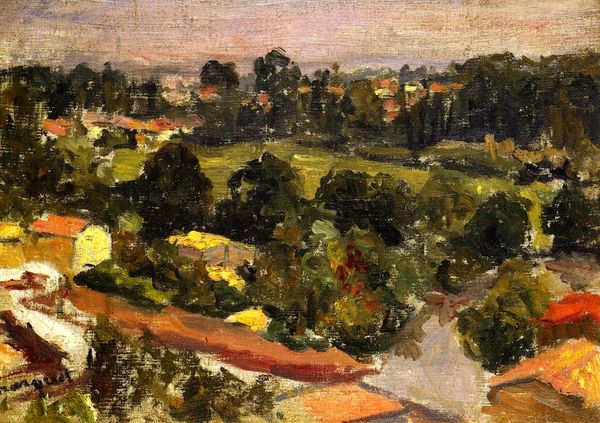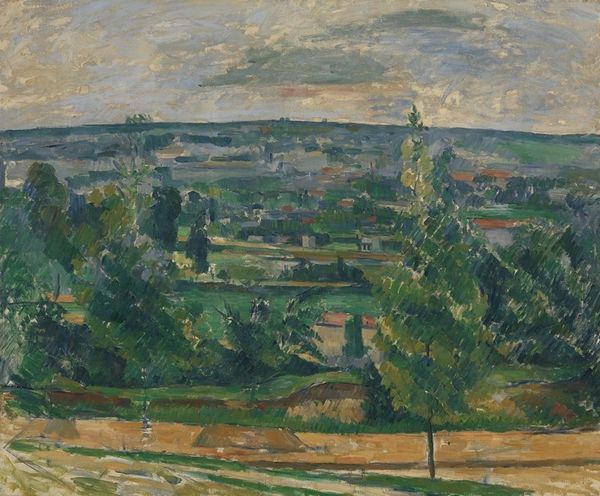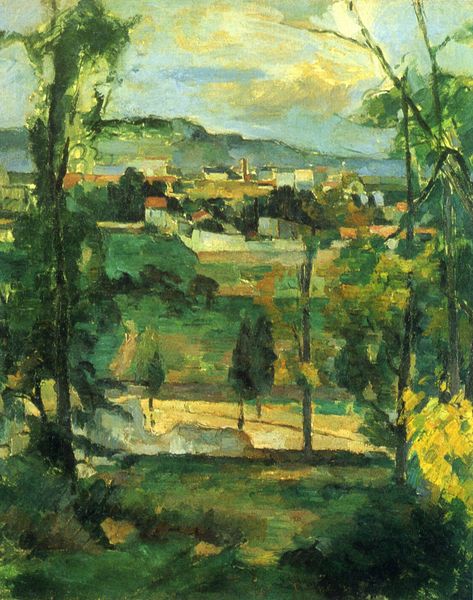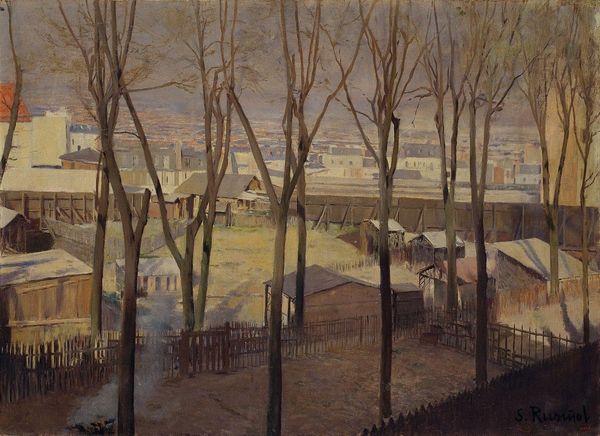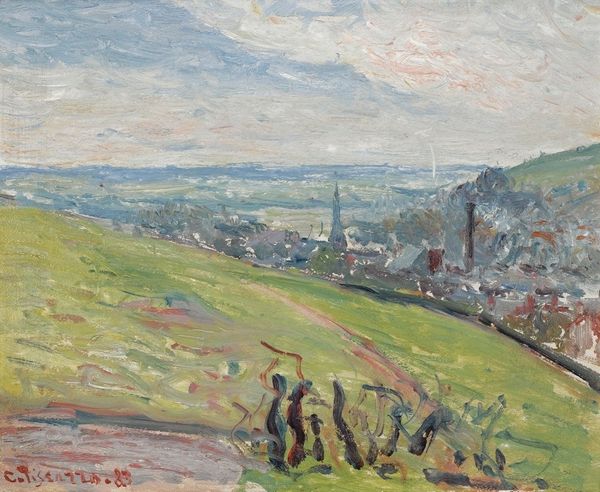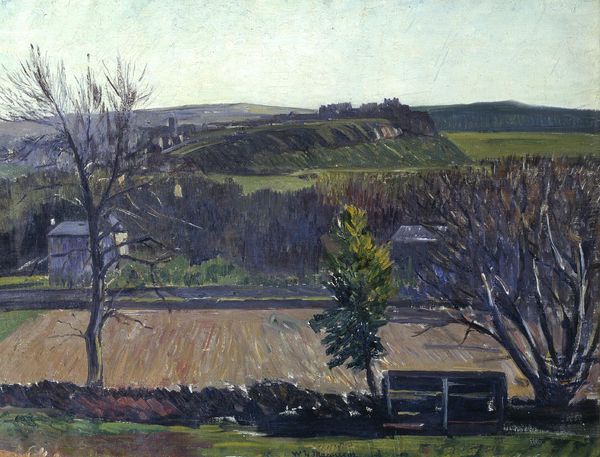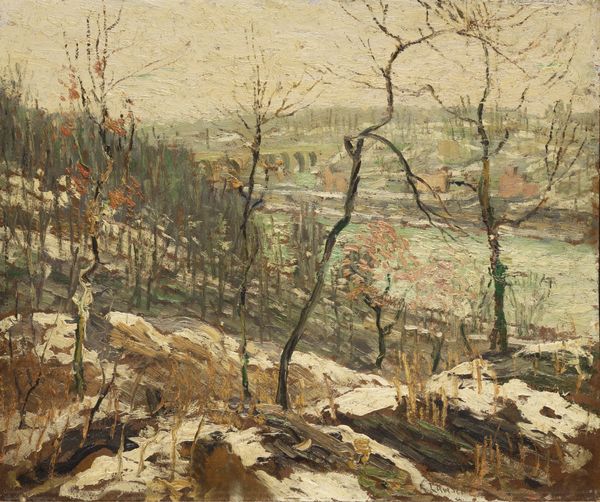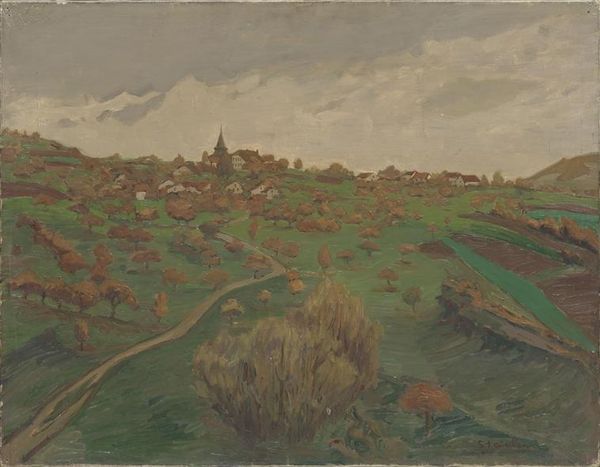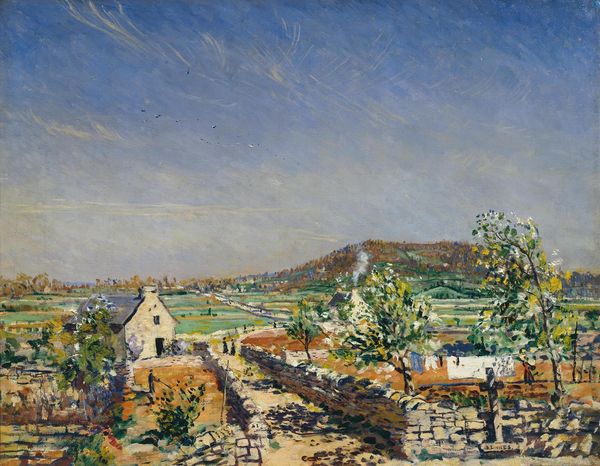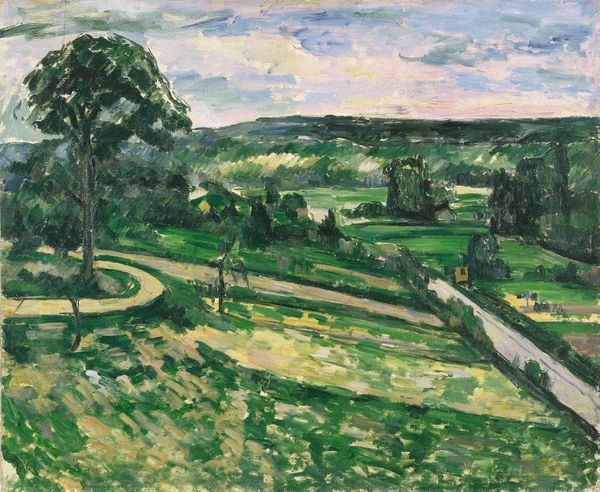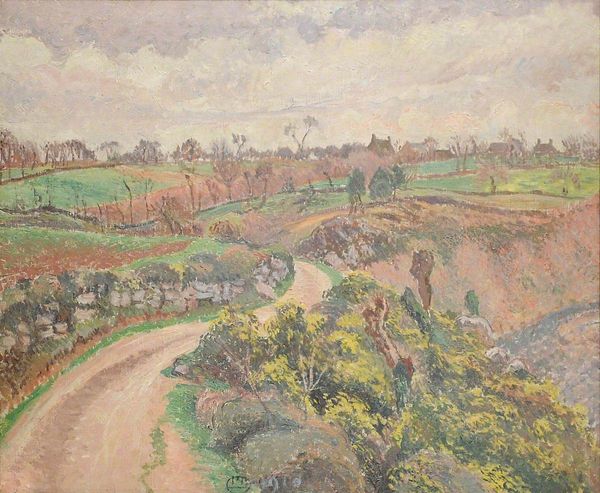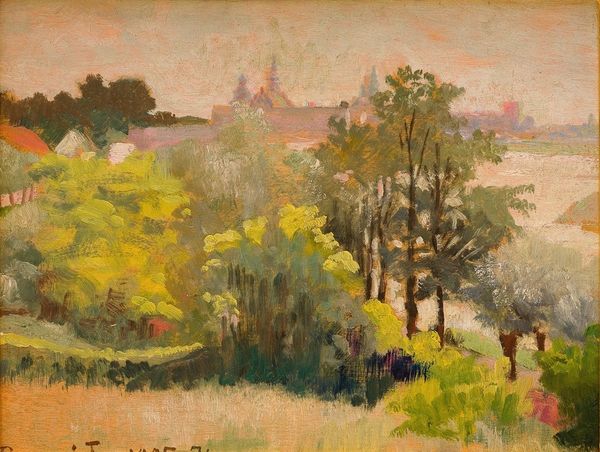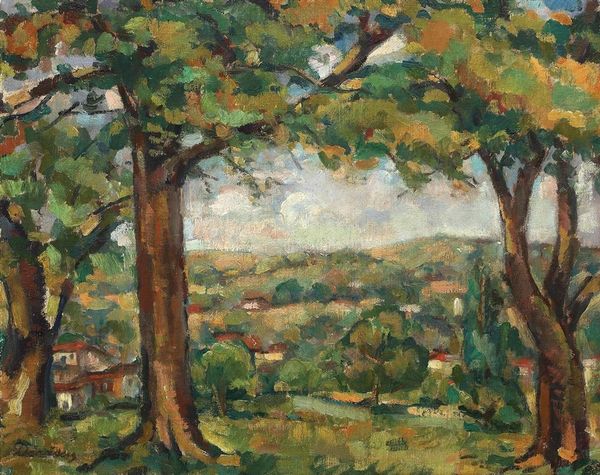
Dimensions: 45.5 x 46 cm
Copyright: Public domain
Editor: This is "Dauphine Landscape" by Pierre Bonnard, painted in 1899 using oil. It strikes me as quite idyllic; almost like looking into a forgotten world. How do you interpret this work? Curator: This piece, to me, is steeped in questions of land and labor. We see figures working the fields. Considering Bonnard was working during a period of intense social change and anxieties about industrialization, I see this landscape as engaging with romanticized notions of rural life, but also perhaps hinting at the realities of agricultural labor. Does it depict an escape or an engagement? What do you think the muted color palette conveys about that? Editor: I hadn’t considered it that way. The muted colours do soften the reality of labour somehow. It's almost as if the scene is purposefully distanced from any harshness. I had only thought of it as pretty! Curator: Exactly. Bonnard and many Post-Impressionists walked a fine line. They sought to represent reality while often aestheticizing it, thus sometimes obscuring social commentary with beauty. Who is this painting for? What is its intent, and what social function did these kinds of landscape paintings play at the time? Editor: So it's like…a complex negotiation between the real and the ideal? I see what you mean. It’s made me question what I see at face value and think about what I might be missing in the scene. Curator: Precisely. And that's how we start to truly engage with art – by questioning its role in reflecting and shaping our understanding of the world. Editor: That’s a great point. Thanks for opening my eyes to that. I will definitely look closer in the future!
Comments
No comments
Be the first to comment and join the conversation on the ultimate creative platform.
